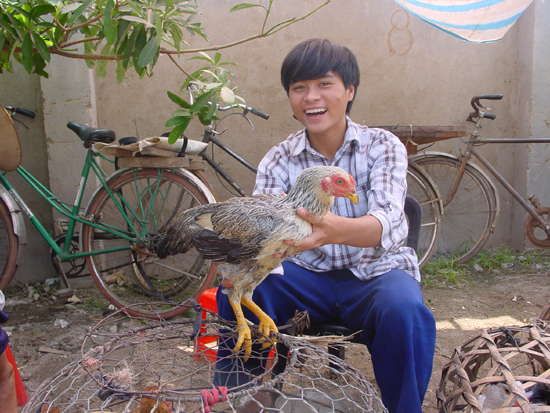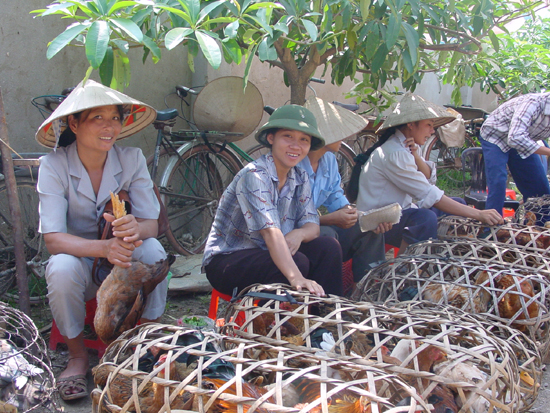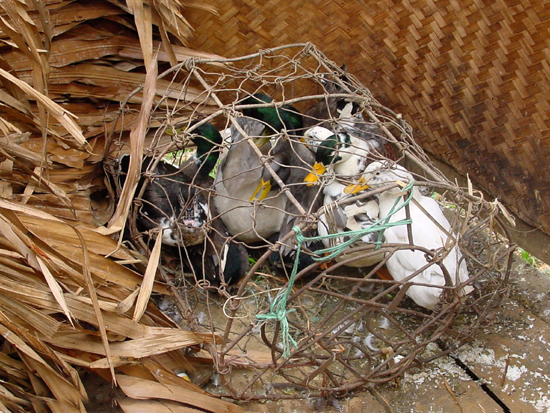Research for Evaluation of Avian Influenza Surveillance in South East Asia - REVASIA
Last update: 16 September 2022
Project dates: 2008-2014
Context
The avian influenza panzootic caused by highly pathogenic H5N1 subtype, the risk of new highly pathogenic strains emerging on an intercontinental level, and the risk that a pandemic strain may develop require the reinforcement of controls at the animal level above all in countries where the disease is recurrent or enzootic, particularly in Southeast Asia.
A central issue in disease management is how to construct permanent surveillance networks that are capable of promptly detecting the emergence of an epizootic to enable a rapid reaction. This issue is even more important in developing countries where human and financial resources are limited and geographic access and communications are sometimes very restricted.
Surveillance networks must be evaluated in terms of their sensitivity and predictive value – their capacity to detect a real emergence within a defined spatial and temporal framework – and their desired cost effectiveness. The performance of systems must be quantified in order to improve them and adjust resources (actors, budgets, structures) to the needs of each country (detection of disease emergence, monitoring the effectiveness of control measures such as vaccination).
Standard evaluation methods are generally qualitative or semi-quantitative and are often subjective. The objective of our research programme REVASIA (Research for the Evaluation of Avian Influenza Surveillance in South East Asia) is to develop innovative quantitative methods based on an evaluation of the health situation and the existing surveillance systems in Southeast Asia region.
Activities and Results
We are basing our research on methods that are being studied in the field of veterinarian medicine (probabilistic modelling, cost-efficacy) and human health systems (capture/recapture, cost/benefits, disability adjusted life years DALYs, quality-adjusted life years QALYs), as well as with multi-agent models applied to the simulation of a surveillance network.
The goal is to obtain generic tools for the evaluation and modelling of influenza virus surveillance systems that would be applicable to both developing and industrialized countries.
Partners
- Institut national de la recherche agronomique (INRA)
- Institut Pasteur in Cambodia
- Centre de coopération Internationale en Recherche Agronomique pour le Développement (CIRAD) or Agricultural Research for Development, UR Agirs
Collaborators
- French Development Agency (AFD)
- French Agency for Food, Environmental and Occupational Health & Safety (ANSES)
- Agronomes & Vétérinaires Sans Frontières (AVSF), France
- Department of Animal Health (DAH), Ministry of Agriculture and Rural Development of Vietnam
- Department of Livestock Development (DLD), Ministry of. Agriculture and Cooperatives of Thailand
- Alfort Veterinary School (ENVA), France
- Kasetsart University (KU), Thailand
- National Veterinary Research Institute (NAVRI), Cambodia
- Institute for Higher Education in Agricultural Sciences (SupAgro), France
Last update: 16 September 2022



